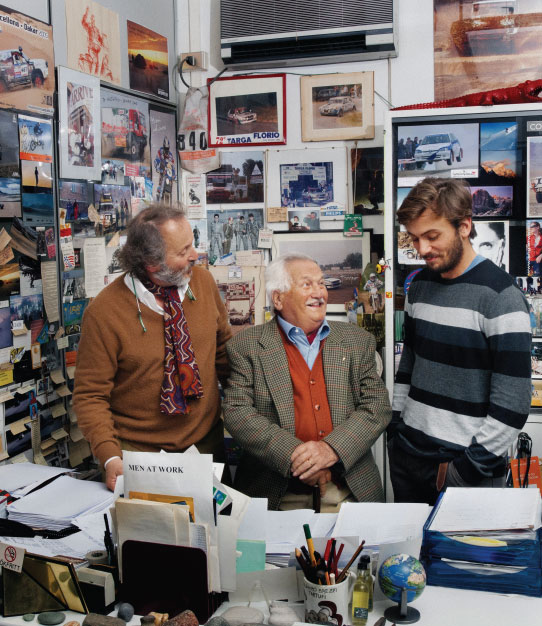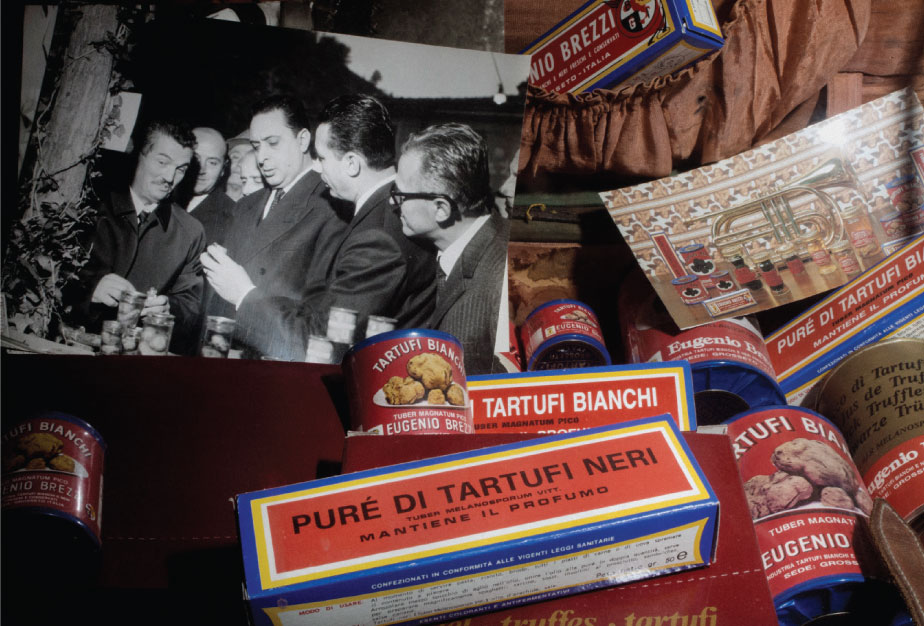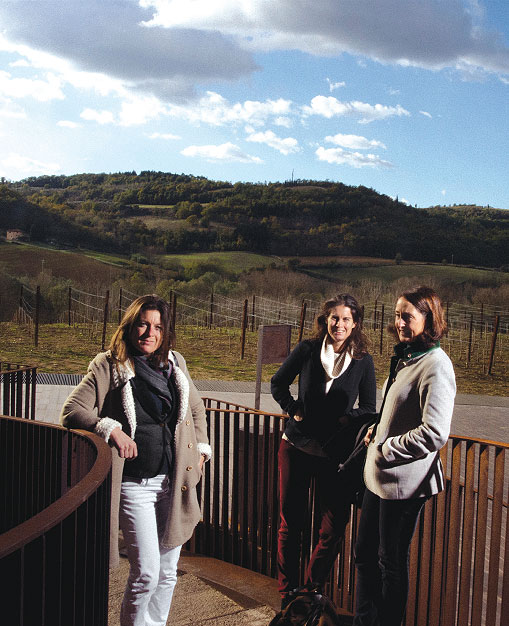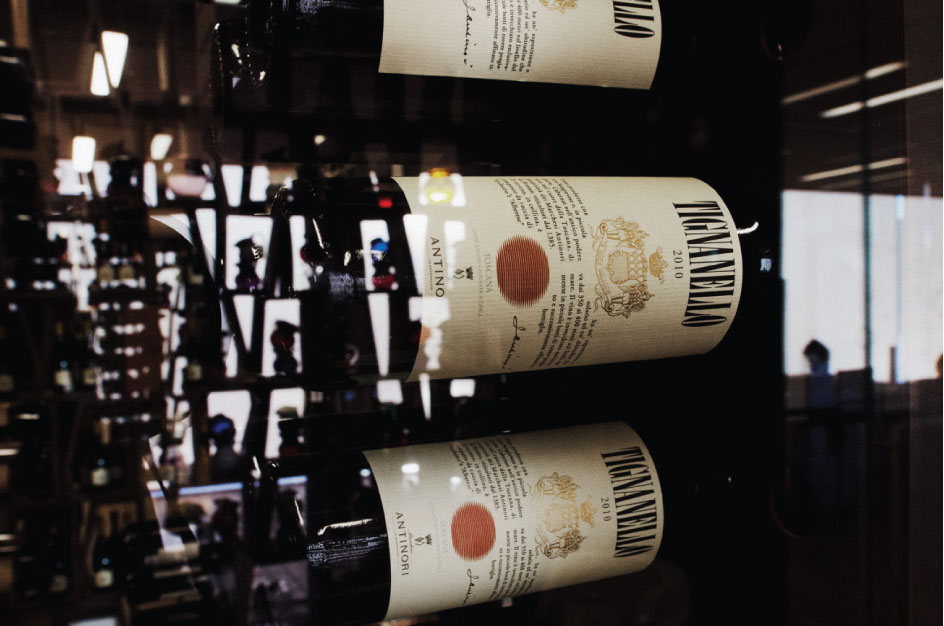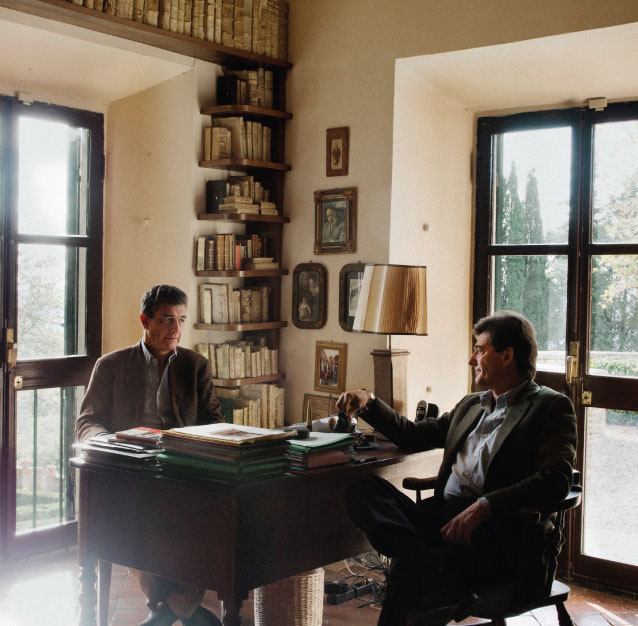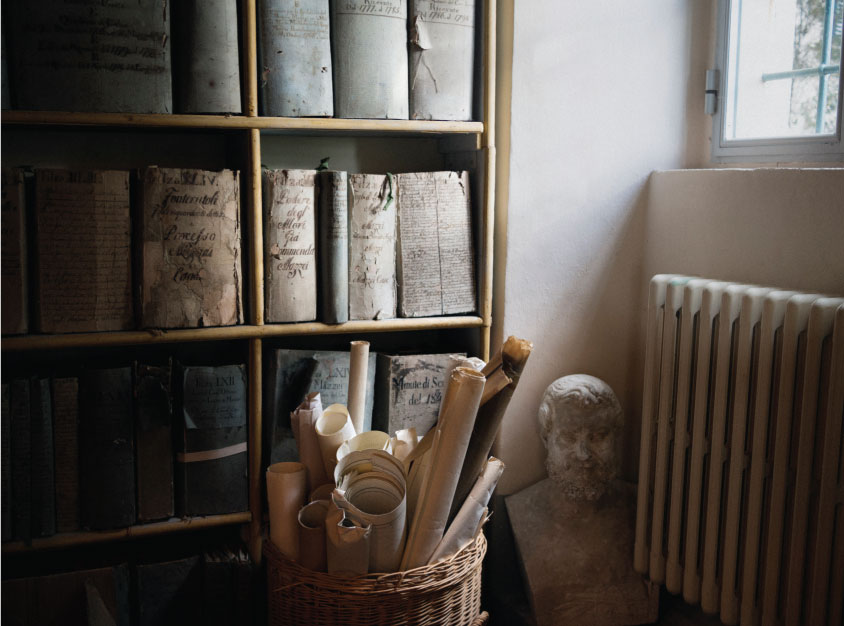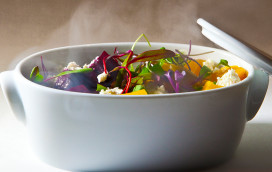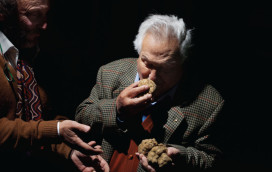In Italy, luxury has long been associated with food. When Catherine de Medici, great-granddaughter of Lorenzo the Magnificent, moved to France in 1633 to marry Henry II, a bevy of cooks followed in her wake, heralding the first export of Florentine cuisine that would go on to spread across the globe. Some 400 years later, many of the world’s most prized gastronomic products are still produced in Tuscany, from single-estate olive oils to sought-after wines, cheeses and treasured truffles.
Remarkably, many of these highly regarded foodstuffs are still produced by the same families who once fed Europe’s aristocracy during the Renaissance. Here, we profile three of them: two noble families, the vintners Marchesi Antinori and the olive-oil producers Marchesi Mazzei, who have been growing grapes and olives for more than 600 years; and the Brezzis, the Tuscan kings of truffles.
The Brezzi Family
Eugenio Brezzi was six years old when he found his first white truffle. Standing by his father in a pine forest collecting cones, he suddenly saw a strange dog digging something up. It was a truffle. Thrilled by the idea of a creature helping man to find such a treat, he took his father’s dog Lola into the forest the next day and found two more. And so began the world-renowned Eugenio Brezzi truffle business.
Today, the 93-year-old is as passionate about the fungi as he was as a child, explaining how the seasons bring different qualities to the truffle. “The white Alba truffle, the most valuable, ripens in autumn,” he explains. “The best ones will have been nibbled at by animals, which only go for the truffles with the strongest scent,” adds his son Valdimiro, who now runs the family business at Grosseto, near the Tuscan coast.
Like many family businesses, the company headquarters abuts the family home, and it is filled with memorabilia from the family’s other passion, travel. The walls are a patchwork of photographs recording epic trips around the world in cars, on motorbikes, horseback and on foot, and there is an enormous map criss-crossed in thick black pen showing itineraries.
It is beyond this office that the truffle rooms lie: spotless areas in which the fungi are inspected, scrubbed, stored, packaged and exported to prestigious stores throughout Italy and across the world as far as Australia and the United States. Here, three members of staff work diligently with their organic gold, some packing up whole truffles, others making white truffle purée to a recipe created by Eugenio Brezzi many years ago.
The Brezzis use no chemical aromas; all of their products are 100 percent natural. “To do things well is the best lesson in economics,” explains Valdimiro, taking a handful of perfect white truffles from a fridge: all perfectly shaped, unmarked and absolutely fresh. This little pile, he estimates, will be worth about $11,000.
Although the Brezzis are master truffle merchants and renowned throughout the world, theirs is a business for which they cannot plan. The truffle grows entirely wild, they explain, and no one can anticipate where it will grow or can plant it. Which is why the family explores forests all year round. Between December and March they will go out hunting for black truffles, also known as a Périgord truffle. Then comes the season for white spring truffles, followed by black summer truffles and finally the white Alba truffles.
A good harvest depends purely on nature’s goodwill. “The deeper in the ground the truffle is found, the better it is,” explains Valdimiro. And it is only the best specimens that will be sold. “If they’re less than perfect, we eat them ourselves.” Which is why Eugenio, Valdimiro and his son Ludovico have just enjoyed truffles with their lunch. As perks of the job go, it’s one that many of their customers would surely envy.
The Antinori Family
Who needs sons when you have three daughters – particularly ones as capable as the progeny of legendary winemaker Piero Antinori? Today, alongside their father, Albiera, Allegra and Alessia Antinori run Marchesi Antinori, one of Italy’s best-known wine labels.
Since their ancestor Rinuccio di Antinori started growing grapes at Castello di Combiate near Calenzano in 1180, the family business has expanded all over the world. Today, having passed through 26 generations, it employs almost 400 people worldwide and has vineyards comprising 1900 hectares in different regions of Italy and 540 hectares of vineyards abroad, from California’s Napa Valley to Chile, Romania and Malta.
While Albiera, the eldest of the daughters, spearheads worldwide marketing, Allegra oversees Antinori restaurants and Alessia, the youngest, runs a family farm near Rome, producing organic wines and cheeses sold in the family restaurant, La Cantinetta Antinori. The first restaurant opened in 1957 in Florence, and it now has offshoots in Zurich, Vienna and Moscow, with another due to open imminently in Baku, the oil-rich capital of Azerbaijan. “The idea is to export our gastronomic lifestyle around the world, centered around our wines,” explains Allegra.
Keeping the Antinoris’ rich heritage alive is constantly on the sisters’ minds – hence their decision to move from their historic headquarters in a 16th-century palace in the heart of Florence to Il Bargino, a splendid avant-garde cellar in Chianti’s rolling hills. More like the sprawling control center of a Bond villain than a wine vault, the 540,000 sq. ft. building is seamlessly integrated within the landscape and almost totally camouflaged. The only part completely visible to the naked eye is a panoramic terrace from which visitors can admire the vineyards, planted mainly with sangiovese grapes.
As Albiera shows us round their new cellars, her handsome features every bit as classic as those of a Renaissance Madonna, she explains how the company reached a turning point in the 1970s with the creation of its flagship wine, Tignanello. A blend of sangiovese with non-traditional grapes cabernet sauvignon and cabernet franc, which was then aged in small French barriques, it was hailed as a Super Tuscan in America, and was a harbinger of the success to come. “It was then we realised that the quality of the grapes was paramount,” continues Albiera. “We knew we had to work during every phase in the vineyards, as well as in the cellar, with the aim of producing the best possible wines without compromising the purity of typical Chianti terrains.”
Although the family’s vineyards are among the oldest in Tuscany, it is essential, Albiera says, for the Antinoris to continue to move forward. “We are always experimenting, because there could always be something new we could improve on. That might be in the vineyards and the cellars, seeing new clones of local and international grapes, experimenting with cultivation techniques, altitudes, fermentation and barrels. And that’s what is exciting: as a family, our work is never done.”
The Mazzei Family
Among the ten oldest family businesses in Italy is that of the Florentine Marchesi Mazzei. They have been making wine and olive oil for nearly 600 years at Castello di Fonterutoli, where they live for part of the year. Known since Roman times as Fons Rutolae, a stopover for travelers commuting between Florence and Siena, the estate came into the family in 1435. It was here that Filippo Mazzei lived during the mid-18th century before traveling to America, at the behest of Thomas Jefferson, to plant vineyards at his estate at Monticello in Virginia: the first in that part of the New World.
Today, Fonterutoli is principally run by two of the middle Mazzei brothers, Filippo and Francesco: both CEOs. Their father Lapo Mazzei is the president, while their elder brother Jacopo and niece Livia are also on the board of directors. Their mother Carla is also active, cultivating lavender on the land, producing small batches of oils and soaps that go on sale at the shop that greets visitors at the very top of the hamlet. Like the Antinori family, they have a magnificent state-of-the-art cellar designed by the CEO’s sister, Agnese Mazzei, an architect and also a member of the board.
“We employ 54 people, but this is a seasonal business so the number of our employees increases during harvest time,” says Francesco Mazzei, as he shows us around the mill where the olive oil is produced. A keen sportsman, he sometimes cycles the 20 miles to and from Florence.
The large building is surrounded by 3,500 olive trees of different varieties – frantoio, leccino, moraiolo and pendolino – from which the celebrated Castello di Fonterutoli extra virgin olive oil Chianti Classico DOP is derived. The dark oil, rich with hints of artichoke and thistle, is sealed in a squat, dark-glass bottle that bears the family’s golden crest.
There are no great secrets, the family maintains, to producing olive oil: it is a process established in ancient times that has changed little over the centuries. But there is an art to producing the very best oils. All of the Mazzei olives, for instance, are picked by hand – mostly in November – before they’ve reached maturity to retain the fruity taste typical of Fonterutoli. They are also pressed within the space of two hours in an atmosphere with a partial, or total, absence of oxygen, depending on the variety of the olives.
The family’s investment in high-tech equipment has meant that they have been able to develop the processes even further. Oil can now, for instance, be extracted even from the smallest lots of olives, so that “cru” bottles can be produced for those with more discerning palates.
The aim, Francesco explains, is to make the same products created by their ancestors, but to make them as refined as possible. “We want to keep alive historical and family values, but with new tools, to make them the very best we possibly can.”
Photographs: Magnum Photos
Your address: The St. Regis Florence
